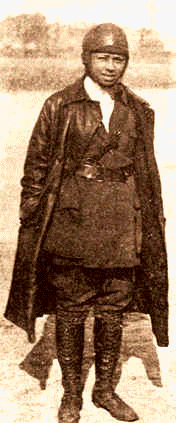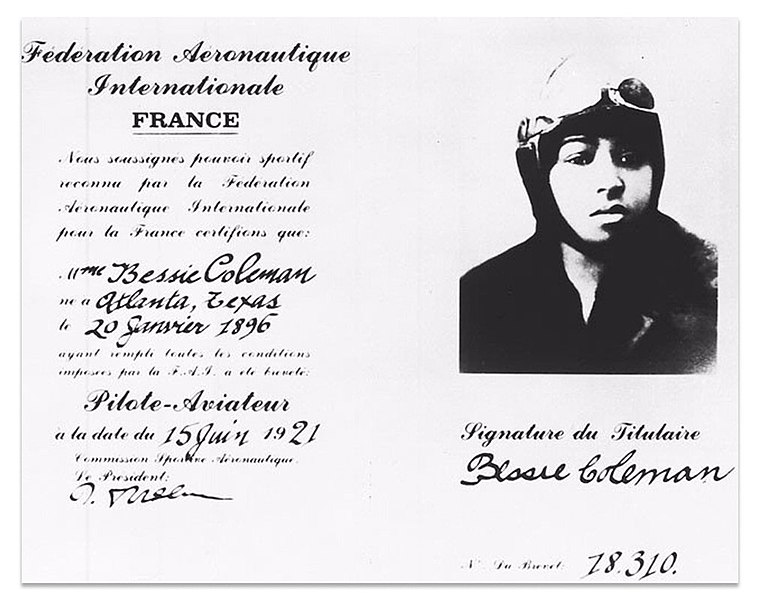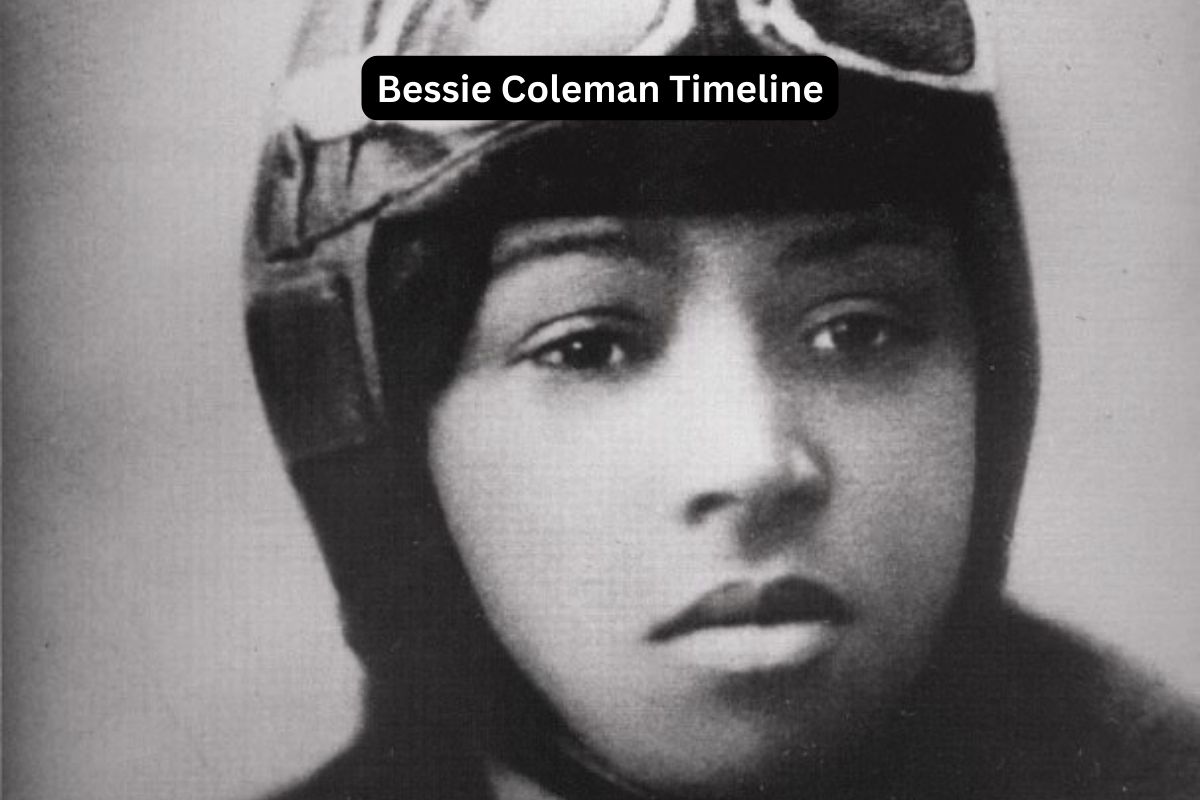Bessie Coleman, born in 1892 in Atlanta, Texas, was a trailblazing African American aviator who overcame racial and gender barriers to become a pioneering figure in the world of aviation during the early 20th century.
Despite facing significant challenges, she earned her pilot’s license in France in 1922, becoming the first African American woman to achieve this distinction.
Bessie Coleman’s remarkable journey and her contributions to aviation continue to inspire generations and are a testament to the power of determination and perseverance in the pursuit of dreams.
| Year | Event |
|---|---|
| January 26, 1892 | Bessie Coleman was born in Atlanta, Texas, USA, to George and Susan Coleman. She was the tenth of thirteen children in her family. |
| 1915 | Bessie moved to Chicago to live with her brothers and work as a manicurist. |
| Early 1920s | Coleman developed an interest in aviation after hearing stories from World War I pilots. She decided to pursue a career in aviation, but American flight schools did not accept African American women as students at the time. |
| 1921 | Bessie Coleman moved to France, where she was able to find a flight school that accepted her as a student. She enrolled in the Caudron Brothers School of Aviation in Le Crotoy, France. |
| 1922 | Bessie Coleman became the first African American woman to earn an international pilot’s license from the Fédération Aéronautique Internationale. She also became the first African American woman to hold a pilot’s license. |
| 1923 | Coleman returned to the United States and began performing as a barnstormer, performing aerobatics and aerial stunts at airshows across the country. She became known as “Queen Bess.” |
| 1925 | Bessie Coleman moved to Los Angeles and continued her career as a stunt pilot, gaining popularity and recognition for her aerial skills. |
| April 30, 1926 | Tragically, Bessie Coleman’s career was cut short when she died in a plane crash during a test flight in Jacksonville, Florida. Her mechanic, William Wills, was piloting the plane, and the accident resulted from a mechanical failure. |
| 1927 | In honor of her pioneering contributions to aviation, the Challenger Pilots’ Association of Chicago established an annual airshow, the Bessie Coleman Aero Club, to celebrate her legacy. |
| 1995 | Bessie Coleman was posthumously inducted into the National Aviation Hall of Fame, recognizing her significant contributions to aviation and her role as a trailblazer for African American aviators. |
Timeline of Bessie Coleman
1892: Bessie Coleman’s Birth
On January 26, 1892, Bessie Coleman was born in Atlanta, Texas, USA. She was the youngest of thirteen children born to George and Susan Coleman, who were sharecroppers.
Growing up in a large, impoverished family, Bessie faced significant challenges and limited opportunities.

1915: Relocation to Chicago
In 1915, seeking better opportunities and a chance to escape the constraints of rural life and racial discrimination in the South, Bessie moved to Chicago, Illinois.
Also Read: Bessie Coleman Accomplishments
She relocated there to live with her brothers, who had already settled in the city. In Chicago, she found work as a manicurist, a job that allowed her to make a modest income and support herself.
Early 1920s: Aspiration for Aviation
While in Chicago during the early 1920s, Bessie Coleman developed a deep aspiration for aviation. Her interest in flying was ignited by stories she had heard about World War I pilots and their heroic exploits.
However, during this era, aviation was still in its infancy, and opportunities for women and African Americans were severely limited. Flight schools in the United States did not accept African American students, especially women, which presented a significant barrier to pursuing her dream.
Undeterred by these challenges, Bessie Coleman remained determined to become a pilot and began exploring alternative options to achieve her goal.
This determination and the support of her community would eventually lead her to take a groundbreaking step by traveling to France, where she would find the opportunity to receive formal aviation training and achieve her dream of becoming a pilot.
1921: Aviation Training in France
In 1921, Bessie Coleman embarked on a remarkable journey to fulfill her dream of becoming a pilot. Faced with racial and gender discrimination in the United States, she made the bold decision to move to France, where she believed she could find a flight school that would accept her as a student.
Also Read: Bessie Coleman Facts
Bessie enrolled in the Caudron Brothers School of Aviation in Le Crotoy, France. Here, she received comprehensive flight training that included both theoretical knowledge and practical flight experience. It was at this school that she honed her skills and ultimately earned her pilot’s license.

1922: International Pilot’s License
In 1922, Bessie Coleman achieved a groundbreaking milestone by becoming the first African American woman in history to earn an international pilot’s license from the Fédération Aéronautique Internationale (FAI).
Her accomplishment was not only significant on a personal level but also symbolically broke barriers for African Americans and women in aviation.
Coleman’s international pilot’s license meant that she was qualified to operate an aircraft, and she had the skills needed to pursue a career as a professional pilot.
1923: Return to the United States as “Queen Bess”
With her pilot’s license in hand, Bessie Coleman returned to the United States in 1923 as a certified aviator. She immediately set out to pursue her passion for aviation and make a name for herself in the industry.
Bessie began performing as a barnstormer, which involved participating in airshows and performing daring aerobatic maneuvers and stunts in the skies. Her fearless flying and charismatic personality quickly earned her fame, and she became known as “Queen Bess” in the aviation world.
As “Queen Bess,” she toured the country, captivating audiences with her aerial displays. Her performances not only showcased her exceptional flying skills but also challenged prevailing stereotypes about African Americans and women, inspiring others to follow their dreams and break barriers in aviation.
1927: The Bessie Coleman Aero Club
In 1927, following the untimely death of Bessie Coleman in a tragic plane crash in Jacksonville, Florida, the aviation community recognized her pioneering contributions and the impact she had made on aviation history.
In her memory, the Challenger Pilots’ Association of Chicago established the Bessie Coleman Aero Club. The Bessie Coleman Aero Club was created to honor her legacy and to celebrate her achievements as one of the first African American women to hold a pilot’s license.
The club aimed to inspire and support aspiring aviators, especially those from underrepresented backgrounds.
1995: Induction into the National Aviation Hall of Fame
Nearly seven decades after her passing, Bessie Coleman received posthumous recognition for her significant contributions to aviation. In 1995, she was posthumously inducted into the National Aviation Hall of Fame, one of the highest honors in the aviation industry.
This induction acknowledged her pioneering spirit, determination, and her role as a trailblazer for African American aviators and women in aviation. It also highlighted her enduring impact on the history of flight and her inspiration to future generations.
Bessie Coleman’s induction into the National Aviation Hall of Fame helped ensure that her story and legacy would continue to be remembered and celebrated as an integral part of American aviation history.
